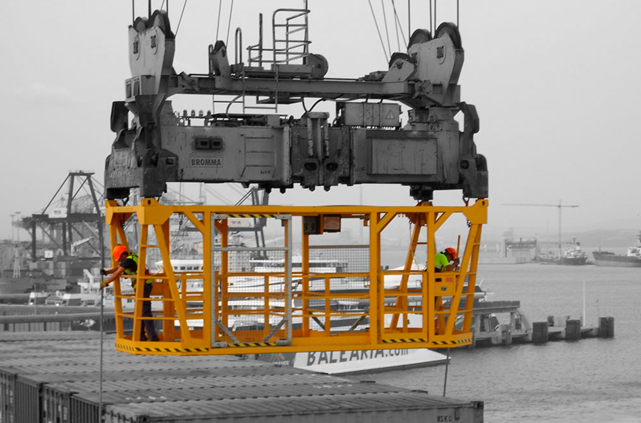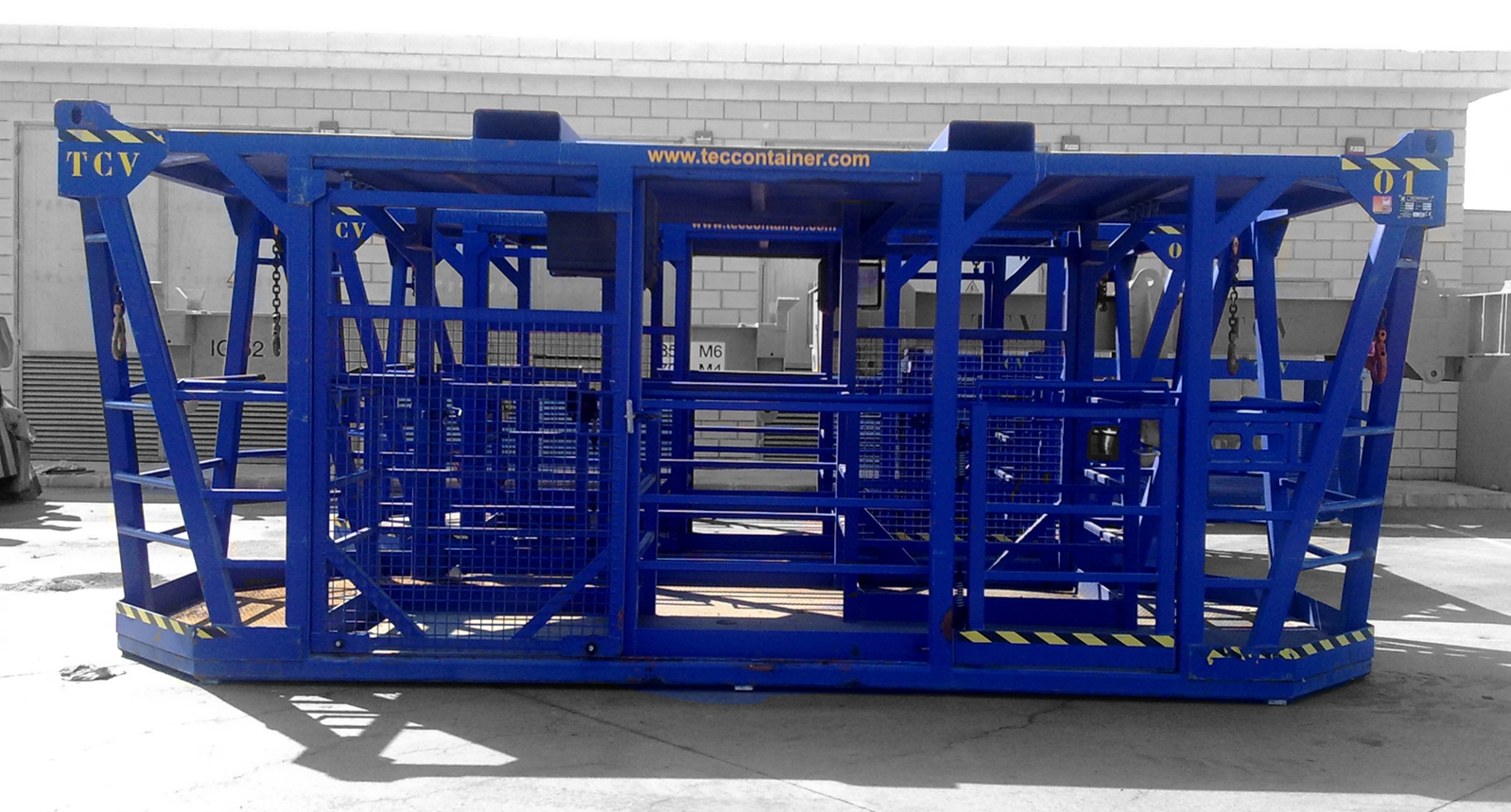At TEC Container Asia Pacific, we believe that safety is the top priority for container terminals and port operators. Working in the dynamic environment of ports and harbours poses unique challenges for stevedores responsible for cargo handling. Negotiating potentially hazardous conditions requires a keen focus on safety measures. A crucial aspect of ensuring port safety is the correct utilisation of safety cages when ascending and descending vessels or machinery. This article seeks to offer essential guidelines for stevedores and port workers on safely entering a safety cage, prioritizing their well-being and maintaining the overall safety of the port environment.
Comprehending the Function of Lashing Cages:
Safety cages, alternatively referred to as safety cages, man cages, or personnel baskets, are created to offer a secure enclosure for workers during vertical transportation. Commonly employed when ascending to heights with cranes, hoists, or other lifting equipment, safety cages act as protective barriers, averting falls and ensuring the safety of individuals engaged in tasks at elevated levels.
Utilising Suitable Personal Protective Equipment (PPE):
Prior to entering a safety cage, it is imperative to wear the necessary personal protective equipment, including a hard hat, safety goggles, high-visibility clothing, and steel-toed boots. This gear acts as a vital defence against falling objects, impact hazards, and other risks associated with port operations.
Conducting Preliminary Examination:
Before entering a safety cage, thorough inspections must be conducted to ensure its proper functioning and structural integrity. This includes checking for any signs of damage, such as dents, cracks, or loose components. Stevedores should also verify that the access gate or door is in good working condition and that the cage is securely attached to the lifting equipment.
Facilitating Communication and Coordination:
Effective communication and coordination between stevedores and crane or hoist operators are essential. Implement efficient communication protocols, such as hand signals or radios, to convey instructions and alerts. Prior to commencing any lifting operations, the crane operator should ensure awareness of the stevedores’ readiness.
Sustaining Three Points of Contact:
When ascending into a safety cage, consistently uphold three points of contact with the structure. This involves keeping either two hands and one foot or two feet and one hand in contact with the ladder, steps, or handrails throughout the climb. Adhering to this practice enhances stability and minimizes the potential for slipping or falling during the ascent.
Climbing and Descending with Care:
Exercise caution when entering or exiting the safety cage, avoiding haste. Ascend or descend the ladder or steps one step at a time, employing deliberate and controlled movements. Refrain from skipping steps or making sudden motions that could jeopardize your balance or compromise safety.
Locking the Safety Cage Door:
Upon entering the safety cage, verify that the access gate or door is securely closed and latched. This prevents accidental openings during transport, reducing the risk of falls or ejections.
Ensuring Safe Load Limits for Safety Cages:
To maintain safety, it is crucial not to exceed the specified weight limits of safety cages. Adhere strictly to these limits and refrain from overcrowding the cage. Overloading can jeopardize the stability of the lifting equipment, escalating the risk of accidents. In cases where multiple workers need transportation, consider employing multiple safety cages or consult with the crane operator for alternative solutions.
Notifying Safety Issues:
In the event of identifying any safety issues or concerns related to the safety cage, promptly inform the relevant authority or supervisor. Avoid using defective or damaged safety cages until they undergo necessary repairs or replacement to guarantee the safety of all personnel.
Final Thoughts:
While climbing into a safety cage may seem routine for stevedores and port workers, it’s imperative never to underestimate its importance. Safety remains paramount in the maritime industry, emphasizing the need for meticulous adherence to safety protocols and best practices during vertical transportation. If enhancing worker safety and mitigating risks are priorities, explore our range of safety cages and lashing equipment.
For more information on TEC Container Lashing Cages, reach out to our team or our website below:
Ian: iogilvie@teccontainer.com.au | Roger: rcannon@teccontainer.com.au | Kenny: kenny@teccontainer.com.au



